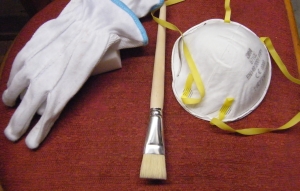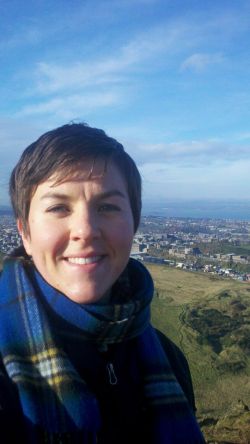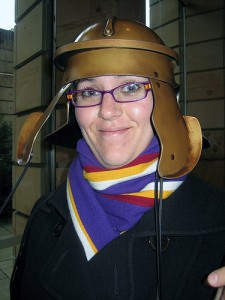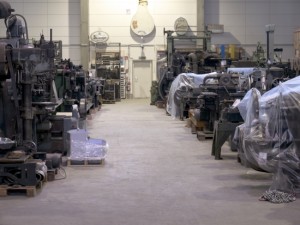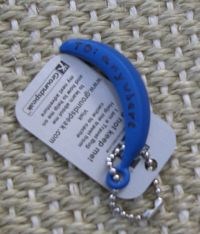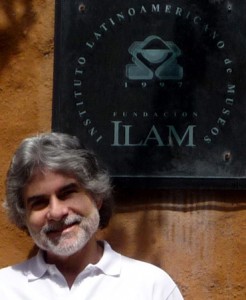How I became a registrar V
Matthew C. Leininger
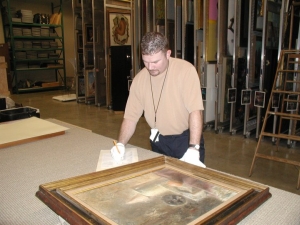 Well Trekkers it is great to write to you once again after seeing the world premier of Art and Craft at the Tribeca Film Festival! The film is great and is going to make history with this whole Landis deal. As I said in the film ‘he messed with the wrong registrar’! Cool thing is gang, Art and Craft will hit the big screen in theaters in the USA late fall, early summer, then the DVD and eventually will be televised. Really neat stuff and I was the registrar to make this all happen.
Well Trekkers it is great to write to you once again after seeing the world premier of Art and Craft at the Tribeca Film Festival! The film is great and is going to make history with this whole Landis deal. As I said in the film ‘he messed with the wrong registrar’! Cool thing is gang, Art and Craft will hit the big screen in theaters in the USA late fall, early summer, then the DVD and eventually will be televised. Really neat stuff and I was the registrar to make this all happen.
But why me and how did I get here?
After being encouraged from a young age by my high school art teacher, Barb Sailor, I worked hard at art all my life and went to college to study the arts. My concentration was in printmaking and stone lithography was my gig. I began my career as an unknowing intern at the Kennedy Museum of Art at Ohio University where I was working on obtaining my Master of Fine Arts degree. Eventually I was hired on at the Kennedy as curator, registrar and preparator. You can say I jumped in head first into what turned out to be an over fifteen year career in the fine art museum field. I met my wife Jen in 1996 and was married in 1997. 17 years wedded bliss this month! I graduated OU in 1998 and took off with my new wife to become the registrar at the Oklahoma City Museum of Art. There I was challenged to move their entire collection from the old fairgrounds building to the new facility which is now downtown. Carolyn Hill was the director at that time, sadly she is no longer with us. Carolyn use to tell me that I was the heartbeat of the museum; she even did so to donors and trustees about me. Pretty big shoes to fill! Eventually I was made Curatorial Department Head overseeing registration, the curators, film and education. I was a whiz at making budgets and keeping them in the black and eventually I was responsible for well over 150 exhibitions during my career.
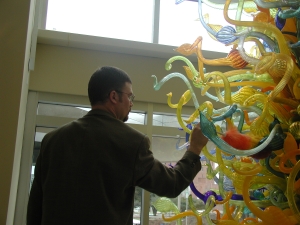 Eight years in Oklahoma City, we decided to move back to Ohio where the end was coming for my career as a registrar, but I did not know it at the time. The Cincinnati Art Museum hired me on as Chief Registrar and I oversaw three fellow registrars that I miss… three good people with much experience. My position, believe it or not, was ‘eliminated’. The reasons I was told I was let go were all bogus and I finally burned my copy of the letter. I believe it was due to financial issues as I was making a seriously big salary for a registrar with full benefits. I think a big contributor however was my link to finding and tracking Mark Landis. A few weeks before I was let go, I was told not to talk about Landis on museum time. So I did not. No phone calls or emails. But you all knew where I was working and if you wanted information on Landis, you called or emailed. I adhered to CAM’s wishes and only talked and worked on Landis at home. I really did not do personal work on Landis at CAM anyway so not sure why they were worried. CAM is in Art and Craft and Cincinnati, OH is pasted all over the big screen. My gain, and a big win for Cincinnati even though the city is not aware of the film hitting the theaters!
Eight years in Oklahoma City, we decided to move back to Ohio where the end was coming for my career as a registrar, but I did not know it at the time. The Cincinnati Art Museum hired me on as Chief Registrar and I oversaw three fellow registrars that I miss… three good people with much experience. My position, believe it or not, was ‘eliminated’. The reasons I was told I was let go were all bogus and I finally burned my copy of the letter. I believe it was due to financial issues as I was making a seriously big salary for a registrar with full benefits. I think a big contributor however was my link to finding and tracking Mark Landis. A few weeks before I was let go, I was told not to talk about Landis on museum time. So I did not. No phone calls or emails. But you all knew where I was working and if you wanted information on Landis, you called or emailed. I adhered to CAM’s wishes and only talked and worked on Landis at home. I really did not do personal work on Landis at CAM anyway so not sure why they were worried. CAM is in Art and Craft and Cincinnati, OH is pasted all over the big screen. My gain, and a big win for Cincinnati even though the city is not aware of the film hitting the theaters!
After looking for museum work for 14 months, and anything I could find to produce an income, I was hired on by a franchise shipping company. That lasted four months and I knew something was wrong with the company when my direct report had to borrow against life insurance to pay me. So out of work again and back to being a stay at home dad with my six year old angel! But the story goes on to where I am today. I am currently a Fulfillment Associate with Amazon.com. Basically what I have been doing for them in this monster size warehouse, is if you order something online, I go get it to have it shipped to you! It is a whole new world but refreshing and showing me that my career as a registrar can pay off in other fields.
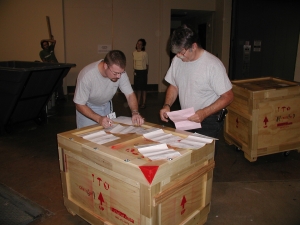 When I left Ohio with my new wife in 1998 I had no clue as to what I would be doing 17 years later. So take my life as a prime example, you will never know what the plan is for your life or career. So be happy where you are today and make each day count as tomorrow brings changes. Sometimes small changes or big, but be prepared. Change is coming. I was scared and worried three years ago when I lost my job which was the first time in my life. But here I am today, a hard working blue collar man with an awesome wife and daughter and I am honored to share how I got here!
When I left Ohio with my new wife in 1998 I had no clue as to what I would be doing 17 years later. So take my life as a prime example, you will never know what the plan is for your life or career. So be happy where you are today and make each day count as tomorrow brings changes. Sometimes small changes or big, but be prepared. Change is coming. I was scared and worried three years ago when I lost my job which was the first time in my life. But here I am today, a hard working blue collar man with an awesome wife and daughter and I am honored to share how I got here!
Talk Soon,
Matt
This post is also available in French, translated by Marine Martineau.
